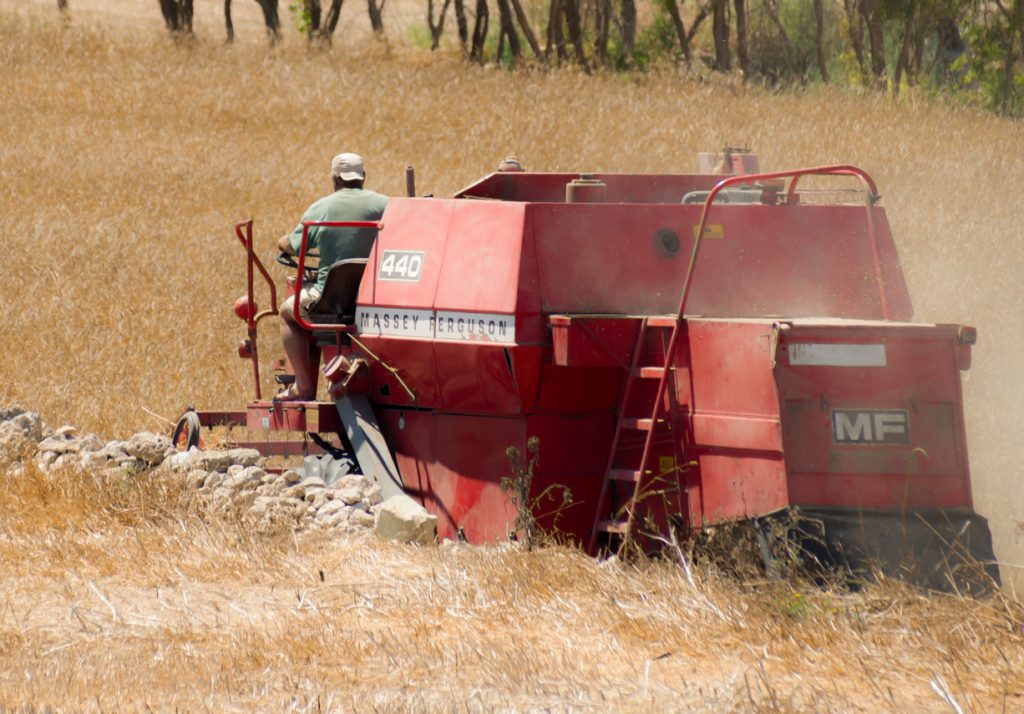NSO sounds warning on climate change impact for Maltese farmers

Maltese farmers could be bracing themselves for smaller crops, lower yields and a higher incidence of diseases and pests according to a climate study published by the National Statistics Office.
Based on observations made by the met office across a period of more than 60 years the report flags important trends and tries to forecast what could be in store for the next decades on the strength of the evidence gathered so far. The report noted that the observed incidence of weather extremes and climate shifts will increase the likelihood of extreme events. Nonetheless, predicting the occurrence and severity of extreme weather events remains a highly challenging activity yet an essential exercise in the calculation of future risk assessments, climate adaptation strategies and responses.
Apart from drawing conclusions from key meteorological data such as temperature, wind speeds, humidity, precipitation and humidity, the report gives an insight on the possible impacts on Malta’s economy such as agriculture and tourism.
In agriculture, changes in temperatures and precipitation patterns are bound to take their toll on production if adaptation measures are not implemented, the study warns. “Extended drought periods may lead to stunted crop growth and lower crop yields while warmer winters may cause higher incidences of diseases and pests. Decreased cloudiness can also bring about higher land surface temperatures and increased rates of evapotranspiration, both of which can be detrimental to an agricultural sector that is reliant on seasonal rainfall and the extraction of groundwater that depends upon rainfall for its replenishment.”
The NSO said that since 1946, grape production in Malta declined by 69% and wheat by 22%. The drop in profits resulting from decreased productivity and higher labour costs associated with the cultivation of both permanent and seasonal crops is a concern.
The changing climate could also have an impact on livestock as a result of elevated temperatures and humidity. It transpires that elevated night-time temperatures do not allow livestock to shed the heat from the day before, and if this happens three days in a row it could pose a serious risk to the health of cows and sheep.
In tourism, projected climate change impacts will lead to additional emergency preparedness requirements, and higher operating expenses which in turn could have an impact on consumer prices, profits and employees’ salaries.
While noting that adaption measures must be implemented to mitigate these effects, the only course of action mentioned in the report at a political level is the National Strategy for Climate Change and Adaptation which goes back to 2012.
The scarcity of local adaptation measures as a response to a changing climate exposes a current lack of awareness on the nature of the changes that are expected to occur on the basis of these future climate projections, the report states.
Other key findings are the following:
- The annual mean, maximum and minimum air temperatures show a clear upward trend since 1952.
- 80 per cent of the warmest 20 minimum night-time temperatures since 1952 occurred during the last 20 years.
- Extended consecutive drought years, especially noticeable since 2000.
- 25 per cent of the top 20 years with the lowest annual total rainfall were recorded from 2001 onwards.
- During the last 20 years, 2016 had the least rainfall (324.8 mm) followed by 2001 (338.2 mm) and 2020 (386.9 mm).
- Between 1952 and 2020 rainfall decreased by 10.3 mm per decade.
- The wind speed shows a declining trend of 0.8 knots (0.4 metres per second) over the past 60 years.
- A strong negative trend has occurred, equivalent to 4.7 percentage points in relative humidity for the entire period of 1961-2020. This is equivalent to 0.8 percentage points per decade.
- The highest mean sea temperature was registered during August of 2003 and 2020 when a temperature of 28.0 °C was recorded.
- 60 per cent of the 20 maximum sea temperatures occurred during the last 20 years.
- The number of days with thunderstorms has increased during the period 1952-2020.
- The autumn period is Malta’s most thundery season, while the month of November registered the greatest increase in thunderstorms.
Read the full report here.
